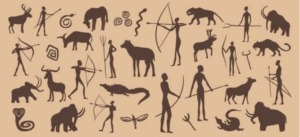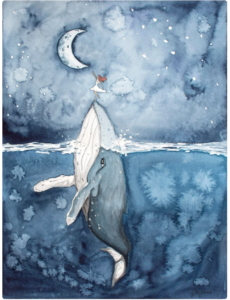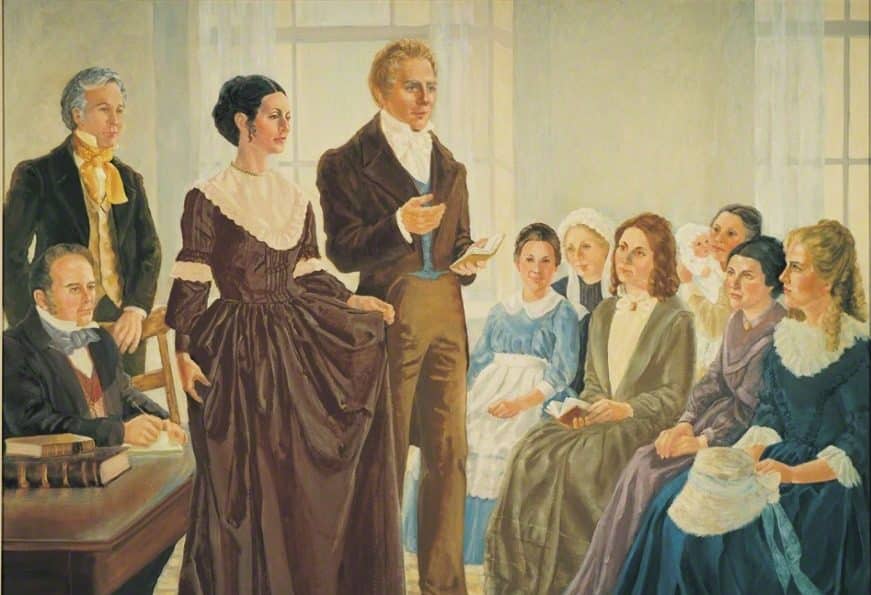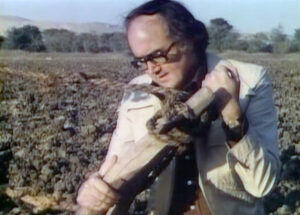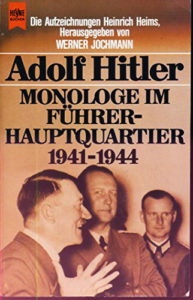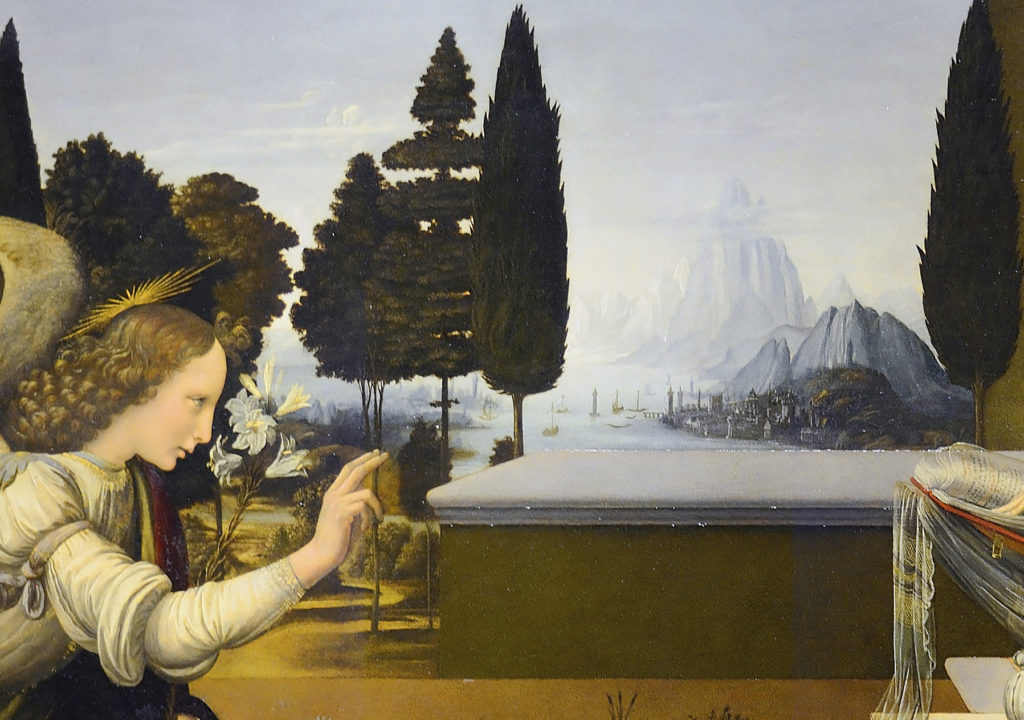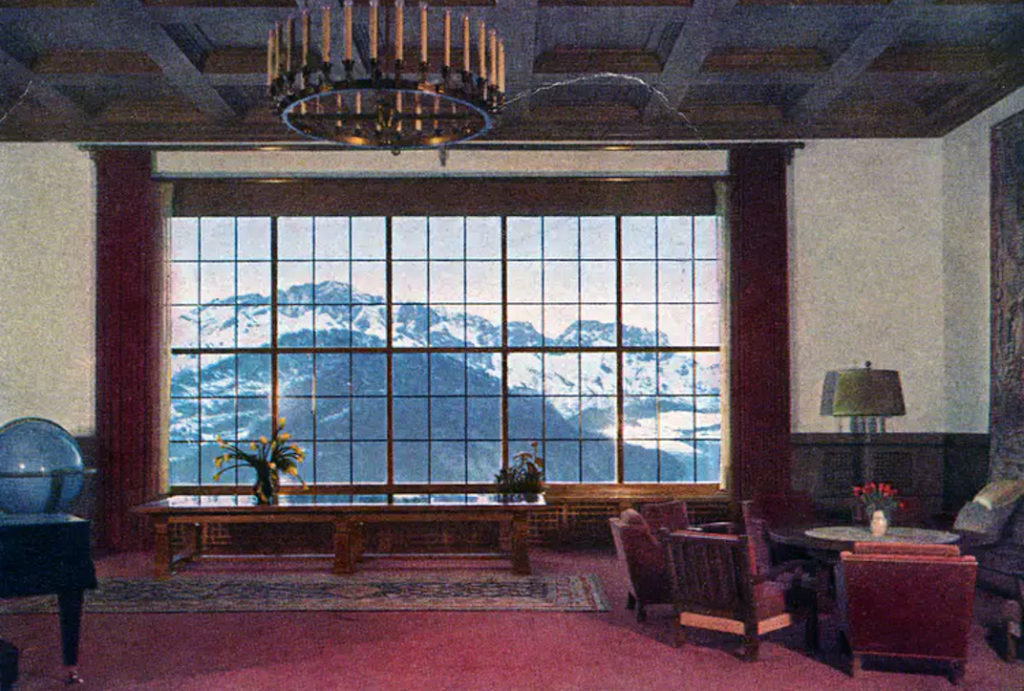vs. Patriarchy, 1
by Eduardo Velasco (*)
Since the New Age along with The Da Vinci Code, feminist-Marxist propaganda and so on, have poisoned this terrain and vilified patriarchy, I proceed to reconquer it.
What is matriarchy in the first instance?
Matriarchy is not a society ruled by women—that is, a gynarchy or gynecocracy—as deluded feminists insist on demonstrating. Such societies rarely occurred, and are very exotic exceptions, in the most primitive, backward and weakest peoples of the world, such as in the Amazon or Indonesia. And if we do not find gynarchies in the modern world, such societies perished at the hands of logically stronger, struggling, non-gynocratic societies. Matriarchy is thus a society in which the predominant influence on the collective character of the people is feminine. The peculiarity of the society as a whole has more affinity with femininity than masculinity, all the spotlights are directed at women, and there is a distinct odour of spiritual oestrogen in the air.
Matriarchy originally corresponds to ancient primitive societies and what Julius Evola calls ‘Mother civilisation’. We are talking about peoples who are generally decadent, spiritually and physiologically exhausted or depressed, where the primacy of religious worship corresponds to Mother Earth—the Great Mother—and where material enjoyment, pleasures, luxury, voluptuousness and opulence are worshipped. Priority is given to compassionate, pious, conciliatory and charitable instincts. The rule to follow is ‘enjoy’, and the result is promiscuous behaviour in every sense. Hedonism or the notion of ‘a brave new world’ is typically matriarchal.
Where can we find traces of matriarchy? In the pre-Aryan inhabitants of Europe, and the Eastern races. For example, in the Etruscans, the Vascons, the Pelasgians or the Minoans, or in areas of Celtic influence where the pre-Indo-European character came to predominate. Even in the Ottoman Turks, in their fat, drunken, retarded or perverted sultans, in the inordinate influence that some of their concubines, or their mothers, came to wield.
What is patriarchy? Quite the opposite. If matriarchy is free will and promiscuity, patriarchy is organisation, ritualism and discipline.
What happened when patriarchal societies met matriarchal societies? There was war. And—oh surprise—the patriarchal invaders triumphed every time, despite being generally fewer in number. Patriarchy violently burst into history, brought by Aryan invasions. Thus, if the Danubian Culture and related settlements around the Mediterranean, in the East and the British Isles, were matriarchal, on the other hand the Mound Culture, the Urnfield Culture, the Volga Battle Axe Culture, the Baltic cultures, the Nordic Megalithic Culture, the Globular Amphora Culture and the Corded Pottery Culture, were patriarchal, and are associated—oh surprise—with the expansion of the Nordic Race.
Intolerance against matriarchy was probably the first religious intolerance and the first fanaticism which our ancestors learned to acquire in the Iron Age. Aryan mythology itself preserves remnants of the immense struggle which our Race waged against the sinister matriarchal cults, remnants of which we shall examine later. In their decadence, the Aryans absorbed some of the customs of the subjugated peoples—that subtle, sticky, disgusting, soft, hedonistic, pacifistic filth with which atriarchy infected Aryanity even before Christianity.
Matriarchy: religiosity and worldview
The source of life is seen as exclusively water and earth. In the matriarchal religious cosmogony of Nature, vegetation is not born because it is watered by Heaven and guided by the Sun (and, naturally, sheltered by the Earth), but exclusively pushed from below by chthonic forces from the underworld. In the same vein, earthquakes are seen as the wrath of the Earth.
The primacy of religious worship belongs to Mother Earth, and everything in matriarchal society has a chthonic orientation. Calendars are based on the lunar cycle and the menstrual cycle it represents. Matriarchal symbols are telluric and tend towards the lunar, the aquatic and the underworld. Curved rather than straight lines abound. Examples are labyrinths, rivers, lakes, caves, snakes, swamps, stars and night.
As examples of typically matriarchal divinities, we have Cybele, Persephone, Demeter, Astarte, Tanit, Gaia or Isis. Such goddesses are often complemented by a castrated male companion (who reminds me very much of today’s pantywaists), such as Osiris or Attis, in an aberrant and unnatural religious cult.
Matriarchal priestesses are hetaeras who offer ‘sacred prostitution’ services and who are in the business of accumulating money. The priests are often eunuchs, like the priests of the Temple of Ephesus, those of Cybele, those of Astarte or as in the Mysteries of Attis.
The dead are buried, whereby they are symbolically returned to the womb from which they are considered to have emerged. In both Greece and Rome, the commoners (descendants of pre-Indo-European matriarchal peoples) were precisely called ‘sons of the Earth’ as opposed to the dominant castes, who were of Hellenic (Greece) or Italic (Rome) Indo-European origin and called themselves ‘sons of the Gods’. The underlying matriarchal philosophy was ‘from the Earth you came and to the Earth you shall return’, thus denying any ascension, any higher essence linked to Heaven and any accountability for our actions. It is such a philosophy that invites ‘enjoy, for life is short’, and acts as redemption for the minds of those who are incapable of obeying any dictates from above.
Places of religious worship used to be caves, areas deep in the earth’s matrix. There is a cult of evil ritual sacrifice, particularly the morbid sacrifice of a pure and innocent victim. Thus, in Phoenicia and Canaan, the newborn firstborn was burned alive, and something similar happened in Carthage. The Etruscans were fixated on the sacrifice of an adolescent male, and the Jews on the sacrifice of Aryan children or robust adult specimens.
Grotesque art forms predominate: disproportionate masks, totemic demonic figures, the butchery of human sacrifice or orgiastic scenes of eating, drinking, fucking and sleeping. The very ancient ‘Venus’ figures are the archetype par excellence of the ‘Great Mother’ in whom these people saw their ideal of fertility and femininity. The songs of matriarchy are laments (think of Arabian desert music or flamenco).
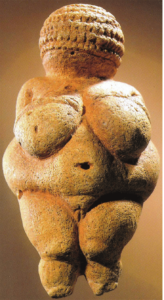 A picture is worth a thousand words: the Venus of Willendorf, a matriarchal idol of the Danubian Culture. Just like a fitness model or a Greek goddess, eh? Sperm whale dimensions, sagging tits, no face, and hips as wide as the Strait of Gibraltar. A testament to the ‘bucolic’, ‘peaceful’ and ‘harmonious’ primitive matriarchal culture so admired by today’s intellectual progressives.
A picture is worth a thousand words: the Venus of Willendorf, a matriarchal idol of the Danubian Culture. Just like a fitness model or a Greek goddess, eh? Sperm whale dimensions, sagging tits, no face, and hips as wide as the Strait of Gibraltar. A testament to the ‘bucolic’, ‘peaceful’ and ‘harmonious’ primitive matriarchal culture so admired by today’s intellectual progressives.
Patriarchy: religiosity and worldview
The memory is preserved of the invasion of a minority and heroic people over a far more prolific people, but little is given to fights of honour. In mythologies, we remember a struggle of a heroic and virile element against a telluric element, as in the cases of Apollo against the serpent Python, Hercules against the two serpents commanded by Hera, Theseus against the Minotaur, Indra against Vitra or Thor against the serpent Iormugand.
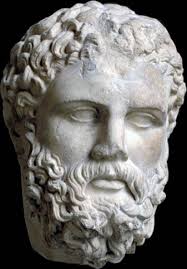 The hero Hercules (called Heracles Misogenes), typically Aryan, is always fighting against the forces commanded by Hera ever since, as a newborn, he strangled two serpents that Hera sent to kill him. We are often told that these myths have to do with a simple ‘social evolution’ that led from matriarchy to patriarchy, but the reality is that they are related to the invasion of a patriarchal people (the Aryan) over a matriarchal people (the Ugrian, the Dravidian, the Semitic, etc., as the case may be) and the imposition of the triumphant patriarchy over the defeated matriarchy.
The hero Hercules (called Heracles Misogenes), typically Aryan, is always fighting against the forces commanded by Hera ever since, as a newborn, he strangled two serpents that Hera sent to kill him. We are often told that these myths have to do with a simple ‘social evolution’ that led from matriarchy to patriarchy, but the reality is that they are related to the invasion of a patriarchal people (the Aryan) over a matriarchal people (the Ugrian, the Dravidian, the Semitic, etc., as the case may be) and the imposition of the triumphant patriarchy over the defeated matriarchy.
Heaven represents the world of spirit and light. The Sun (serene sky, light) and the storm (lightning, rain, angry sky) are seen as the source of life. The Earth is not disregarded or omitted; on the contrary, it is integrated into a system of Earth-Sky interaction in which the predominant role is played by the Sky, and in which the intermediate product is the natural world of green vegetation and red blood. The Aryans were not unaware of the importance of the telluric and Mother Earth. Demeter, Persephone, Gaya, Erda and Mat Zemya bear witness to this.
The primacy of religious worship belongs to Father Sky, and everything in a patriarchal society has a celestial (‘Olympian’) rather than an earthly orientation. Calendars are based on the solar-heroic cycle of birth, zenith, sacrifice, death and rebirth.
The main symbols of patriarchal societies are phallic, celestial, warlike and solar. Examples are the Swastika, the mountain (made into a holy place like Japan’s Mount Fuji or Sparta’s Mount Taigeto, or even the abode of the Gods, like Mount Olympus), the fire, the tree, the banner, the flag, the Sun, the Celtic Cross, the wheels, the eagle, the horse, the Lightning (considered the destructive counterpart of the creative power of the Sun), the hammer, the double axe, the sword or the spear. Straight lines take precedence over curves. The best example of this is the runic alphabet and the runic-derived Greek, Latin and Cyrillic capital alphabets, as well as the ancient Templar alphabet.
The main patriarchal divinities are warrior representations of male fighting, virility and fertility, even of subtle but certain rebellion (Prometheus, Hercules, Siegfried). Thor, as the god of thunder, rain and storms, wielder of the hammer and scourge of ‘giants’ is probably the best example of male divinity of celestial fertility and struggle against the Cthonic forces. Likewise, the gods of patriarchal pantheons are ruled by a Heavenly Father. Examples of typical patriarchal gods are Odin, Tyr, Zeus, Apollo, Apollo, Ares, Mars, Teutatis, Taranis, Thor, Dievs, Perun and Perkunos. The Latin name Jupiter (originally equivalent to Thor in his role as the wielder of thunder) comes from ‘Father God’ (Dyaus Piter). However, the patriarchate also has important female divinities: Phrygia, Athena, Minerva, Artemis, Diana and Dievana are typical Patriarchal goddesses, aloof, serene and full of austere dignity.
The origin of the priestly castes, where they exist, is in the warrior aristocracy. Priestly functions are often performed by kings, military captains, clan patriarchs, heads of families or first-born sons of the family line. Personal magic is considered a feminine affair, and power over the earth and matter is considered a man’s business. Likewise, priestesses in patriarchal societies (as opposed to matriarchal hetairas) are virgins, as were the priestesses of Artemis in Sparta, the Pythia of Delphi or the vestals of Rome.
The dead are cremated, which symbolically implies that their bodies are consumed and their spirits ascend from Earth to Heaven—to the world of the spirit. Sovereigns or heroes are deposited inside tumuli, mountains or pyramids, i.e. celestial monuments of vertical matter which, in their purifying ordination, are raised to Heaven, with the subconscious idea of preserving them in the earthly bosom to return at a future time of greatest need. It is well borne in mind that death is not the end, and that our actions will decide the future of the dead in the Hereafter. The Hereafter itself is not conceived as a peaceful and happy paradise, it is conceived as a place where old comrades-in-arms, blood brothers and ancient patriarchs of the Race await, and where the struggle is eternal.
The places of worship were originally mountain tops—as among the ancient Iranians—or places where there were dolmens, menhirs and other vertical and ‘phallic’ signs. Later, burial mounds, pyramids and temples were erected, which were conceived as the material envelope of the spiritual idea: the material shell of the sacred spiritual fire.
In art, sobriety and a tendency towards realism and idealism prevailed. There is a tendency to depict scenes of sport, hunting and war—in other words, of effort and heroism. In architecture, the celestial orientation is evident: monuments related to Heaven (dolmens, menhirs), obelisks, columns, pyramids, domes, towers, triangles and so on.
The cult of sacrifice in patriarchal societies is centred on the notion of duty, asceticism and effort, especially on the battlefield. The fallen in battle are elevated to divine status and become objects of worship.
____________
Note of the Editor: This article was originally published on November 11, 2008, when Eduardo Velasco didn’t yet post his entries in the Evropa Soberana webzine, but in Velasco’s (also defunct) Nordic Thunder webzine. A copy of the original article in Spanish taken from web.archive.org can be read here.
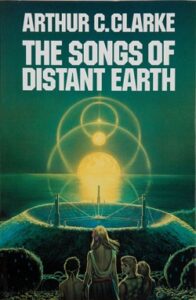 What bothered me about the first book in the Foundation series I read is that Asimov simply transfers his beloved New York to the capital of the empire, Trantor, with 40 billion humans: the centre of all intrigue and symbol of imperial corruption. Every day, fleets of tens of thousands of ships brought the produce of twenty agricultural worlds to the tables of Trantor. It’s a shame that Aryans like George Lucas have imitated Trantor with the city of Coruscant. Like Trantor, Coruscant is a kind of super-developed New York that encompasses the entire planet (in Lucas’ universe, Coruscant is also the seat of government). All of this is degeneration, obviously, and you have to read about what Thalassa was like in The Songs of Distant Earth to understand it.
What bothered me about the first book in the Foundation series I read is that Asimov simply transfers his beloved New York to the capital of the empire, Trantor, with 40 billion humans: the centre of all intrigue and symbol of imperial corruption. Every day, fleets of tens of thousands of ships brought the produce of twenty agricultural worlds to the tables of Trantor. It’s a shame that Aryans like George Lucas have imitated Trantor with the city of Coruscant. Like Trantor, Coruscant is a kind of super-developed New York that encompasses the entire planet (in Lucas’ universe, Coruscant is also the seat of government). All of this is degeneration, obviously, and you have to read about what Thalassa was like in The Songs of Distant Earth to understand it.